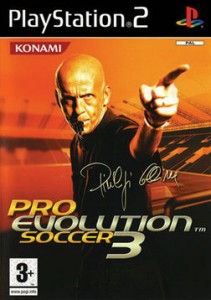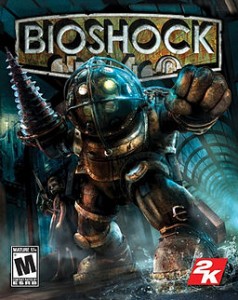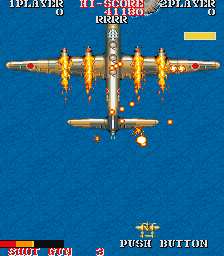292nd played so far
 Genre: Sports
Genre: Sports
Platform: Arcade
Year of Release: 2005
Developer: Incredible Technologies
Publisher: Incredible Technologies
Yeah, you read that right. For those of you who’ve been following our adventures for a while, you will know why that title matters. If not, it’s quite simple. Golden Tee Live is one of our big ‘worries’ – a game that’s difficult to get hold or find, in this case because it’s only available on the arcade game, with a quite distinct controller, with no clues on where we could find one. A similar situation to Final Furlong, really.
Or so we thought. Recent investigation revealed the existing of a home version of the game. While it would lack the connectedness of the ‘official’ edition, it appears identical in (nearly) every other aspect, so the rest of it seems to matter little. We’ll take it.
Our Thoughts
For once, I can come in with a bit more background information about a game. While it’s a long time ago (and the controls obviously don’t match), when I was younger we used to have a golfing game for an old PC. It was surprisingly fully featured, thinking back on it, with its own course editor, and quite some variety in controls and such. I can’t say I was addicted to it as such, but I spent quite some time playing it… and messing around with courses and making my own way through.
I have not, however, played actual golf yet, which is sort of the other side of all of this. Something that shocked me since I was always a fan of pitch and putt when I was a kid.
One of the biggest things that makes the game enjoyable are the controls. Not unlike Steel Battalion (another one of those big ‘can we get it’ games), the controls are what make the game unique, difficult to get, but worth the time.
The controls are satisfying visceral. The most important bit – your swing – comes from you rolling a trackball back and forward, with the speed of your roll determining the strength of your swing, with the back and forward swing being adjusted by the direction you roll in. It feels awesome.
The courses are as interesting and diverse as you’d expect and want. Different areas of the course have noticeably different effects on your swings, there’s plenty of water and difficult areas to move around and so on.
Added variety comes from the other obligatory options (really) – your choice of club really does matter, easily shown on the screen when you pick. Wind plays a fairly major part as well, nudging the ball enough to get it to the hole… or into a lake, to be honest.
One of the slightly disappointing things (at least in the version we played) is that all of this plays out on an overhead map. It’s useful to track your trajectory and adds accuracy, but it’s not as visually interesting. The shame here is that the game gives you a (semi-)3D ‘intro’ at the start, giving you a look at the area (looking quite nice), but that disappears the moment the game really starts.
Still, it’s a small blemish on what, for us, is an addictive sports game that certainly brought out the most competitive in us. Especially one of us (I don’t know what you’re talking about). It’s actually a keeper now, which we didn’t expect (and didn’t have for Steel Battalion and such…)
Final Thoughts
It’s difficult to find the arcade game – or at least it was for us, since it seems like all listings that are out there are broken or wrong. Trust us, we tried. The home version, however, is easier to find and a lot of fun to play. Absolutely worth it, even if it doesn’t look as fantastic as you’d expect now. Then again – with the lack of golf games on the list, you have to wonder whether you need it.







